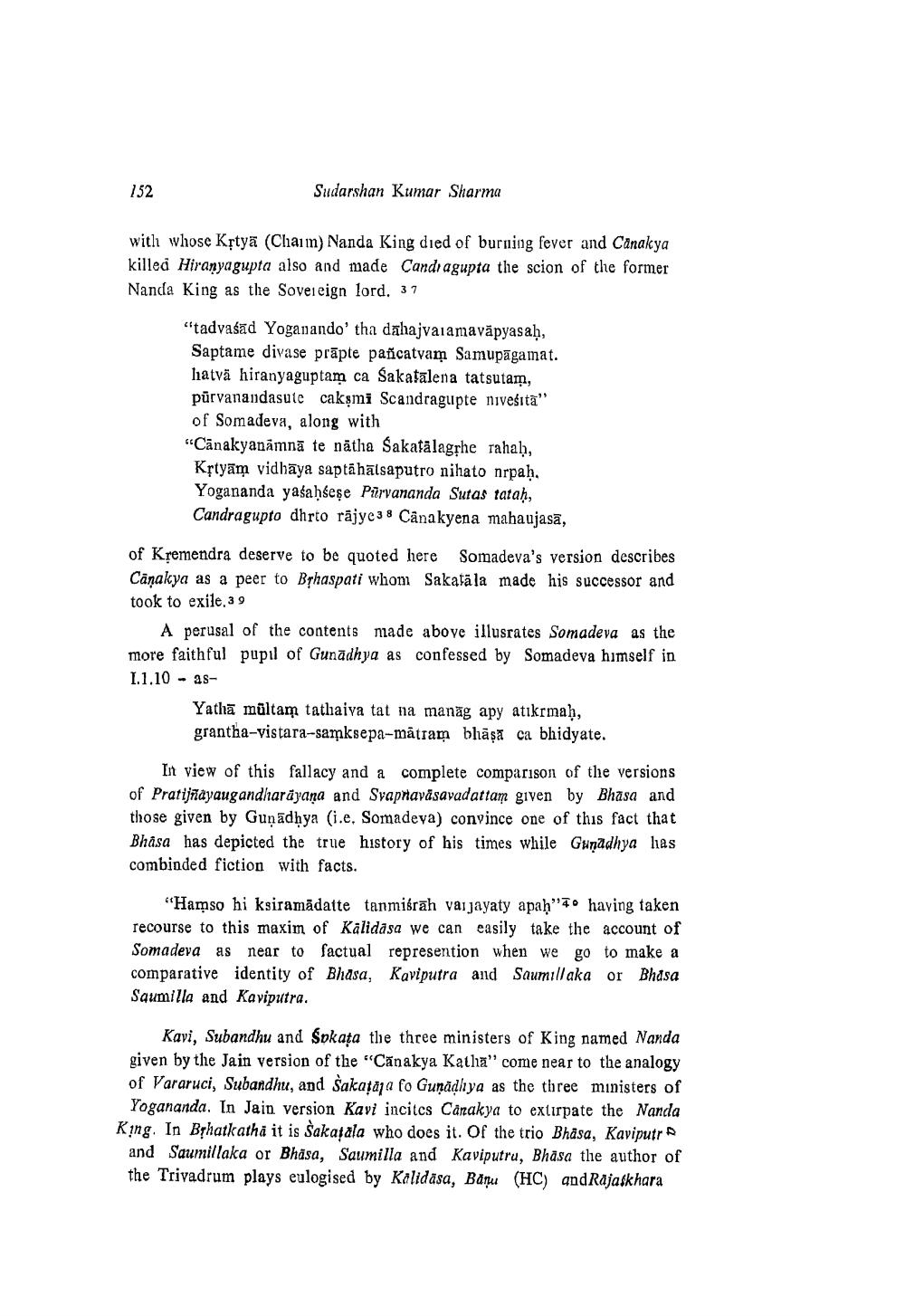________________
152
Sudarshan Kumar Sharma
with whose Kệtya (Chaim) Nanda King died of burning fever and Canakya killed Hiranyagupta also and made Candragupta the scion of the former Nanda King as the Sovereign lord. 37
"tadvasad Yoganando' tha dahajvaianaväpyasah, Saptame divase prāpte pañcatvam Samupügamat. latvä hiranyaguptam ca Sakatalena tatsutam, pūrvanandasute cakşmi Scandragupte nivesita" of Somadeva, along with “Cānakyanāmnā te nātha Sakatālagshe rahaḥ, Kftyām vidhāya saptā hālsaputro nihato nrpaḥ, Yogananda yaśaḥśeșe Pūrvananda Sutas tataḥ, Candragupto dhrto rājye38 Cânakyena mahaujasa,
of Kremendra deserve to be quoted here Somadeva's version describes Cāņakya as a peer to Bghaspati whom Sakaļāla made his successor and took to exile 39
A perusal of the contents made above illusrates Somadeva as the more faithful pupil of Gunadhya as confessed by Somadeva himself in 1.1.10 - 25
Yathā mültam tatliaiva tat na manāg apy atikrmah, grantha-vistara-samksepa-matram bhāsă ca bhidyate.
In view of this fallacy and a complete comparison of the versions of Pratijñayaugandharayana and Swapnaväsavadattam given by Bhasa and those given by Guņādhya (i.e, Somadeva) convince one of this fact that Bhasa has depicted the true history of his times while Gunadhya las combinded fiction with facts.
"Hamso hi ksiramädatte tanmisrah vaijayaty apah"having taken recourse to this maxim of Kalidasa we can easily take the account of Somadeva as near to factual represention when we go to make a comparative identity of Bhasa, Kaviputra and Saumillaka or Bhasa Saumilla and Kaviputra.
Kavi, Subandhu and Spkața the three ministers of King named Nanda given by the Jain version of the "Cánakya Katha" come near to the analogy of Vararuci, Subandhu, and Sakațaja fo Gunādlıya as the three ministers of
Yogananda. In Jain version Kavi incites Canakya to extirpate the Nanda King. In Bțhatkatha it is šakatala who does it. Of the trio Bhasa, Kaviputr
and Saumillaka or Bhāsa, Saumilla and Kaviputru, Bhasa the author of the Trivadrum plays eulogised by Kalidasa, Bäņu (HC) and Rajaskhara




